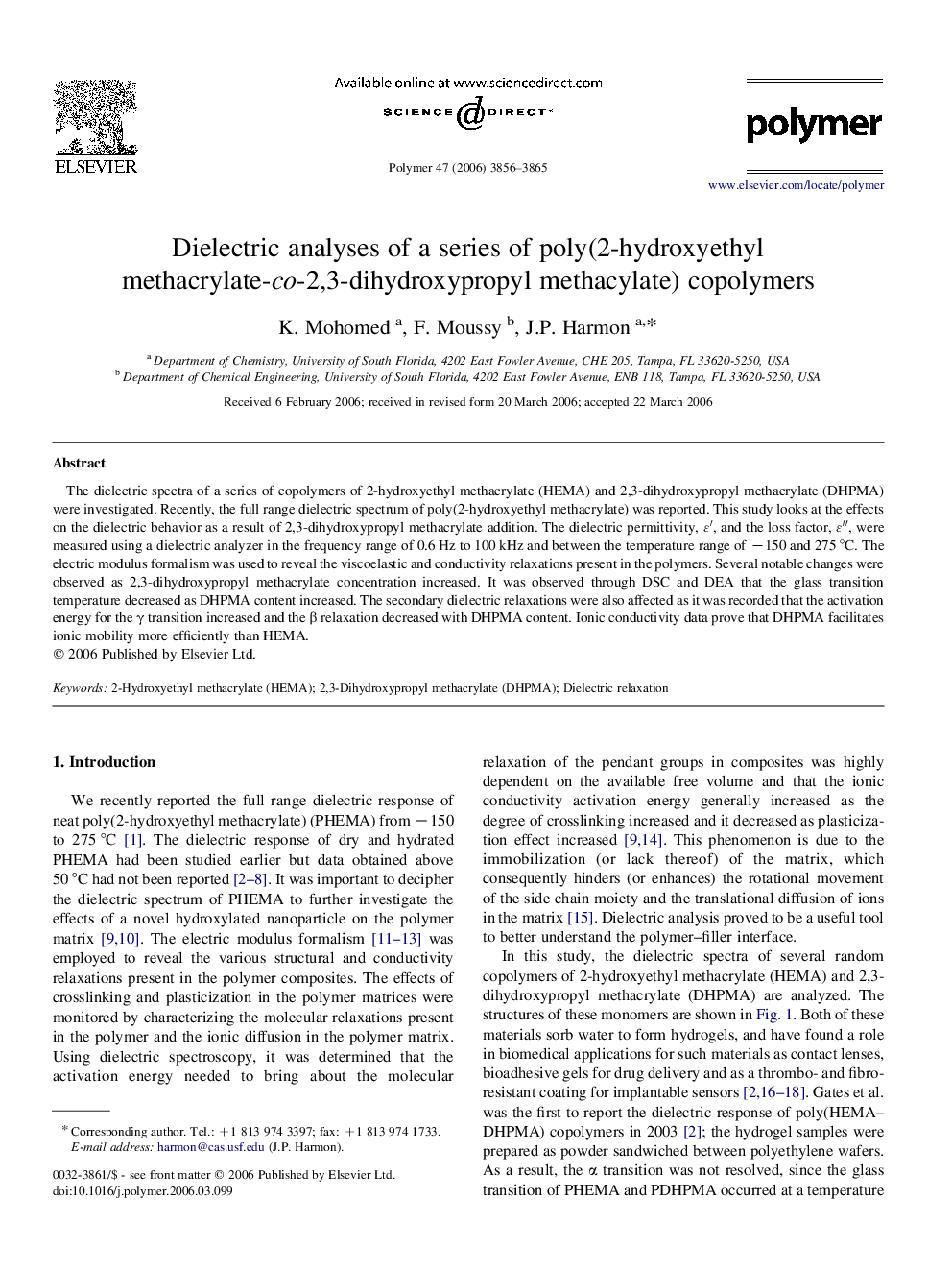| Article ID | Journal | Published Year | Pages | File Type |
|---|---|---|---|---|
| 5190040 | Polymer | 2006 | 10 Pages |
Abstract
The dielectric spectra of a series of copolymers of 2-hydroxyethyl methacrylate (HEMA) and 2,3-dihydroxypropyl methacrylate (DHPMA) were investigated. Recently, the full range dielectric spectrum of poly(2-hydroxyethyl methacrylate) was reported. This study looks at the effects on the dielectric behavior as a result of 2,3-dihydroxypropyl methacrylate addition. The dielectric permittivity, εâ², and the loss factor, εâ³, were measured using a dielectric analyzer in the frequency range of 0.6 Hz to 100 kHz and between the temperature range of â150 and 275 °C. The electric modulus formalism was used to reveal the viscoelastic and conductivity relaxations present in the polymers. Several notable changes were observed as 2,3-dihydroxypropyl methacrylate concentration increased. It was observed through DSC and DEA that the glass transition temperature decreased as DHPMA content increased. The secondary dielectric relaxations were also affected as it was recorded that the activation energy for the γ transition increased and the β relaxation decreased with DHPMA content. Ionic conductivity data prove that DHPMA facilitates ionic mobility more efficiently than HEMA.
Related Topics
Physical Sciences and Engineering
Chemistry
Organic Chemistry
Authors
K. Mohomed, F. Moussy, J.P. Harmon,
